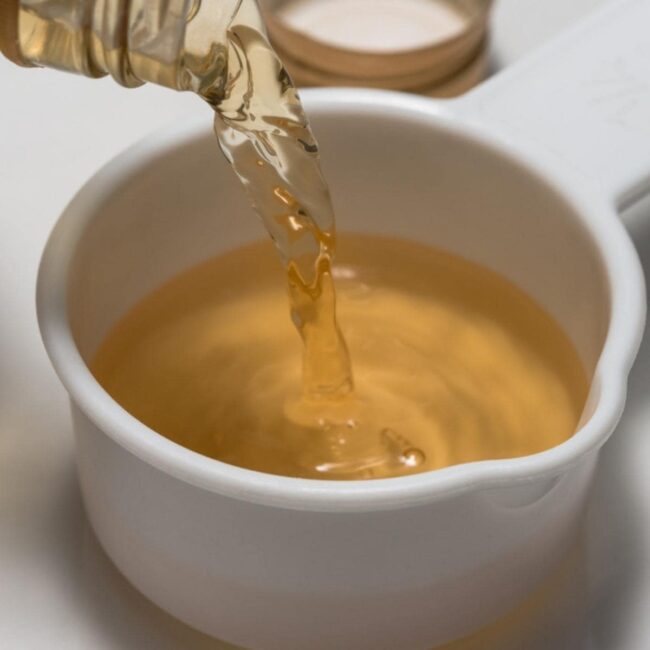5 Zesty Orange Zest Substitutes for Any Recipe
Orange zest substitutes ensure dishes keep their bright, citrusy lift when fresh peel isn’t available.
Certain alternatives add tangy depth, while others bring a milder fruitiness.
Desserts, sauces, and drinks stay fresh and aromatic with a well-matched replacement.
Keeping flavors lively means selecting an option that blends seamlessly.
What to Know About Orange Zest
Orange zest is the flavorful outer peel of an orange, used to add bright citrus notes to dishes. It enhances desserts, sauces, and drinks.
Using Orange Zest in Cooking
The vibrant orange zest adds a burst of color and texture to any dish.
This finely grated peel enhances flavors with its aromatic qualities, making meals more enjoyable.
In baking, it delivers a refreshing citrus taste without introducing extra moisture, allowing for perfect doughs and batters.
Recipes benefit greatly from this ingredient as it elevates both aroma and overall flavor profile.
With its ability to transform ordinary dishes into something special, orange zest becomes an essential tool in the kitchen arsenal.
Features of Orange Zest
A strong and fragrant essence defines orange zest, featuring a bright tanginess balanced with a slight sweetness.
Essential oils concentrated within the zest enhance its flavor, making it bolder than the juice of the fruit.
The texture introduces a gentle crunch to various dishes, enriching everything from airy cakes to crunchy cookies.
Rubbing an orange’s outer skin releases aromatic oils, showcasing how effortlessly these flavors blend into meals.
This vibrant ingredient adds depth and complexity to culinary creations while inviting creativity in recipe development.
Using zest can elevate ordinary dishes into something extraordinary with minimal effort.
Orange Zest Replacement Choices
Common substitutes for orange zest add citrusy brightness to dishes without using fresh zest. They provide flavor depth in baked goods, sauces, and marinades.
Citrus Fruit Alternatives
Tangerine and mandarin zest serve as excellent replacements for orange zest, providing a similar taste while adding a hint of uniqueness to your dish.
For those looking for sweetness, clementine zest offers a milder flavor that still enhances recipes with its pleasant citrus aroma.
Grapefruit zest introduces a subtle bitterness, allowing it to be used in equal amounts as an alternative.
Lime zest adds a tropical twist and can also replace orange zest in the same quantity, lending dishes an exciting tartness.
Lemon zest matches the vibrant notes of orange well when used equally in recipes, ensuring that bright citrus flavor shines through.
Other Fruit Options
Chopped finely, candied orange peel serves as a flavorful alternative in baking.
This ingredient adds a rich orange flavor to various dishes.
While it leans towards sweetness, its unique taste can elevate recipes beautifully.
Many bakers appreciate using it for its concentrated essence and vibrant color.
Incorporating this bright element can transform ordinary treats into something special and memorable.
Chefs often rely on candied orange peel to enhance both flavor and visual appeal in their creations.
Substitutes for Orange Zest
Creating a homemade citrus blend can solve the absence of fresh fruits.
Start by combining equal amounts of orange juice concentrate with finely grated peel from lemons, limes, or grapefruits.
This mixture mimics the lively flavor of orange zest quite well.
Adjusting the ratio allows for personal taste preferences, balancing sweetness and tartness to match your dish perfectly.
Using common pantry items makes this an accessible option for many kitchens.
Enjoy this versatile alternative in various recipes!
Liquid-Based Substitutes
Using liquids as substitutes enhances recipes with moisture and flavor balance. These alternatives work well in baking, cooking, and beverages.
Juices and Squeezed Drinks
Orange zest can be replaced with orange extract, which is very concentrated.
Just a few drops equal one teaspoon of zest.
For a similar citrus flavor, lemon extract works well too; start with half a teaspoon for every teaspoon needed.
Fresh juices from oranges or other citrus fruits like lime or clementine serve as great substitutes in dishes that allow extra liquid; use three times the amount compared to zest due to their lower concentration.
Grapefruit juice offers an alternative with a hint of bitterness and should be used in the same proportion as orange juice when substituting for zest.
Lemon juice also provides that refreshing zing and can be swapped in equal amounts to orange juice when replacing orange zest.
Oils and Vinegars
Liquid substitutes can effectively enhance the citrus flavor in recipes, especially when considering the role of orange zest.
Orange essential oil provides a potent option; using just one or two drops offers a vibrant taste without bitterness.
For a milder touch, orange flower water introduces an elegant scent and pairs well with other flavors for added depth.
Apple cider vinegar brings fruity acidity to dishes but should be used carefully; starting with half a teaspoon for every teaspoon of zest allows room for adjustment without overwhelming the palate.
White wine vinegar also contributes tartness to savory meals, although it’s best used sparingly to maintain balance among ingredients.
Adjusting Flavor and Aroma
Adjusting flavor and aroma with substitutes requires using fresh citrus zest or extracts. The right alternative maintains the balance of sweetness and acidity.
Finding Sweet and Sour Balance
Finding the right substitutes for orange zest requires balancing tart and sweet flavors.
Citrus juices like lemon, grapefruit, or lime can replicate the zesty tang but tend to be sweeter than zest itself.
A good rule of thumb involves using two teaspoons of juice for every teaspoon of zest while cutting back on other sweet ingredients.
Apple cider vinegar serves as another option; just a few drops can provide a nice tang without overwhelming sweetness.
Adjusting amounts based on your taste will help achieve that perfect flavor balance in your dish.
Building a Scent Profile
A distinct fragrance fills the air with orange zest, making it challenging to find an exact match.
Lime zest serves as a lively alternative, especially in dishes like guacamole or salsa.
Tangerine zest offers a sweet and citrusy aroma that works well in dressings and marinades while adding subtle savory notes.
Achieving the best flavor requires careful adjustments; gradually add these substitutes while tasting along the way to maintain balance without overpowering your dish.
Enjoy experimenting with these zests to enhance your culinary creations!
Useful Cooking Tips
Useful cooking tips include properly zesting citrus and storing it for future use. Freezing or drying zest helps retain its aromatic qualities.
Correct Ratios and Sizes
Using substitutes can affect the taste of your dish, so choosing wisely is essential.
Fresh orange juice works well; 1 tablespoon replaces 1 teaspoon of zest.
When it comes to lemon zest, a direct swap at a 1:1 ratio offers similar flavor with a bit more tartness.
For concentrated ingredients like orange extract or tamarind paste, starting with about ½ teaspoon allows for easy adjustments based on your preferences.
Fresh zest enhances dishes beautifully; when grating or zesting an orange, focus solely on the colored peel to avoid any bitterness from the white pith beneath.
Keeping these tips in mind ensures that your recipe maintains its delicious character and depth of flavor.
Keeping and Storing Alternatives
Long-term storage of citrus zest or juice requires careful handling.
Storing zest in the fridge involves placing it in an airtight container, where it should be used within a few days for optimal freshness.
For extended preservation, freezing offers a great option; zest can freeze on a parchment-lined tray and then go into a freezer bag, lasting up to six months without losing flavor.
Substitutes like orange extract or marmalade remain effective when kept in their original containers while following specific guidelines for preservation.
Utilizing a potato peeler allows for larger strips of zest that may need mincing before use to evenly distribute flavor throughout your dish.




